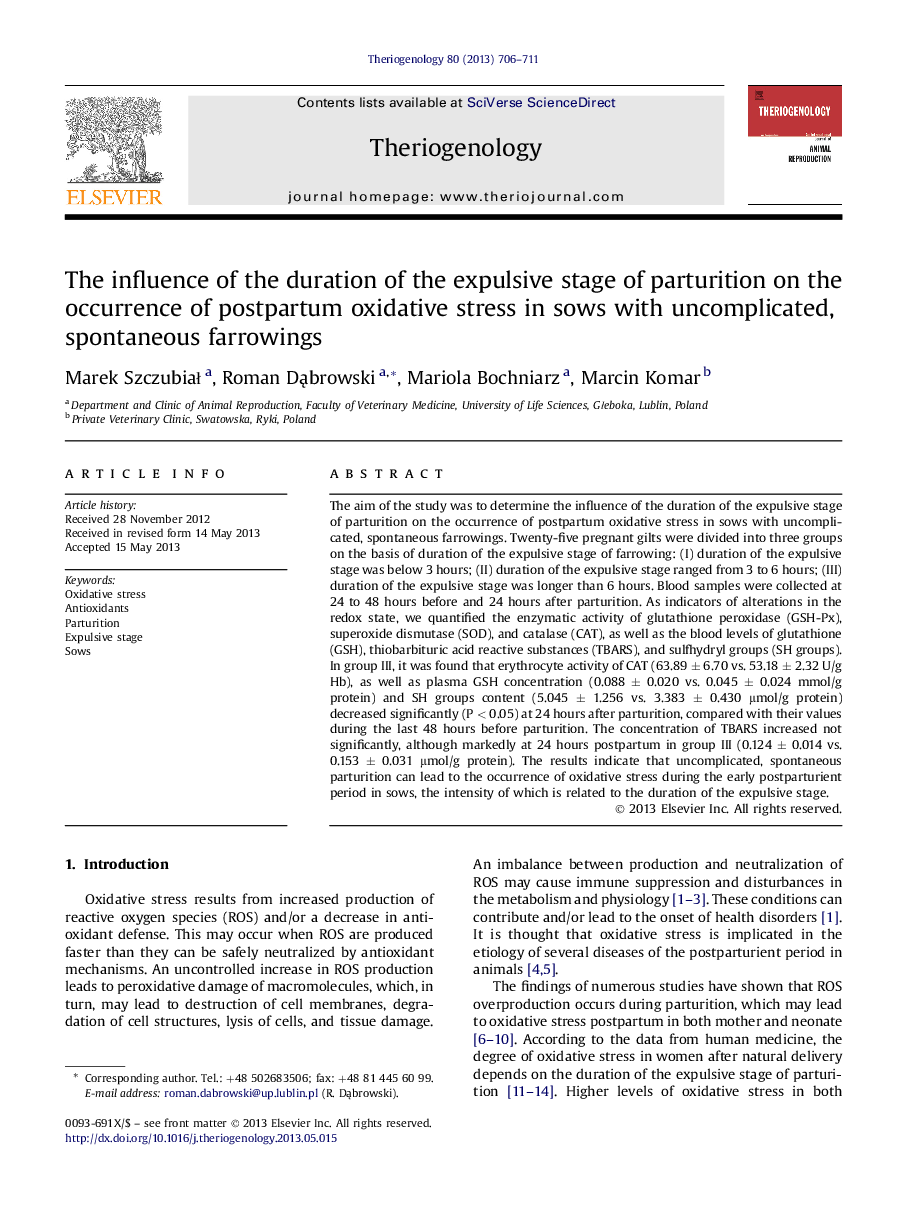| Article ID | Journal | Published Year | Pages | File Type |
|---|---|---|---|---|
| 10892054 | Theriogenology | 2013 | 6 Pages |
Abstract
The aim of the study was to determine the influence of the duration of the expulsive stage of parturition on the occurrence of postpartum oxidative stress in sows with uncomplicated, spontaneous farrowings. Twenty-five pregnant gilts were divided into three groups on the basis of duration of the expulsive stage of farrowing: (I) duration of the expulsive stage was below 3 hours; (II) duration of the expulsive stage ranged from 3 to 6 hours; (III) duration of the expulsive stage was longer than 6 hours. Blood samples were collected at 24 to 48 hours before and 24 hours after parturition. As indicators of alterations in the redox state, we quantified the enzymatic activity of glutathione peroxidase (GSH-Px), superoxide dismutase (SOD), and catalase (CAT), as well as the blood levels of glutathione (GSH), thiobarbituric acid reactive substances (TBARS), and sulfhydryl groups (SH groups). In group III, it was found that erythrocyte activity of CAT (63.89 ± 6.70 vs. 53.18 ± 2.32 U/g Hb), as well as plasma GSH concentration (0.088 ± 0.020 vs. 0.045 ± 0.024 mmol/g protein) and SH groups content (5.045 ± 1.256 vs. 3.383 ± 0.430 μmol/g protein) decreased significantly (P < 0.05) at 24 hours after parturition, compared with their values during the last 48 hours before parturition. The concentration of TBARS increased not significantly, although markedly at 24 hours postpartum in group III (0.124 ± 0.014 vs. 0.153 ± 0.031 μmol/g protein). The results indicate that uncomplicated, spontaneous parturition can lead to the occurrence of oxidative stress during the early postparturient period in sows, the intensity of which is related to the duration of the expulsive stage.
Related Topics
Life Sciences
Agricultural and Biological Sciences
Animal Science and Zoology
Authors
Marek SzczubiaÅ, Roman DÄ
browski, Mariola Bochniarz, Marcin Komar,
